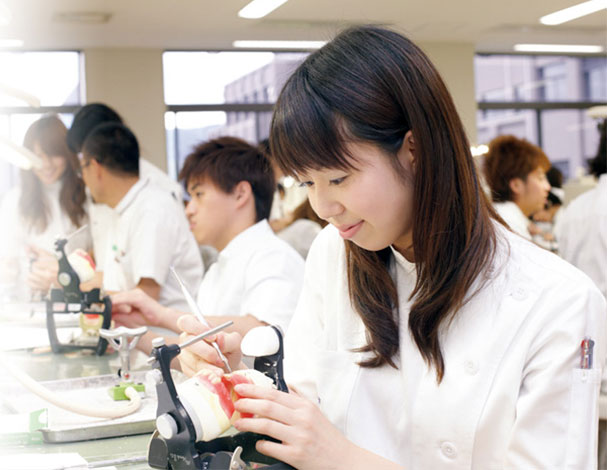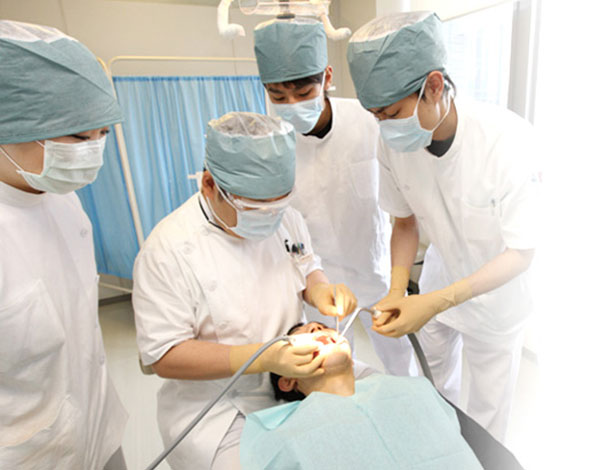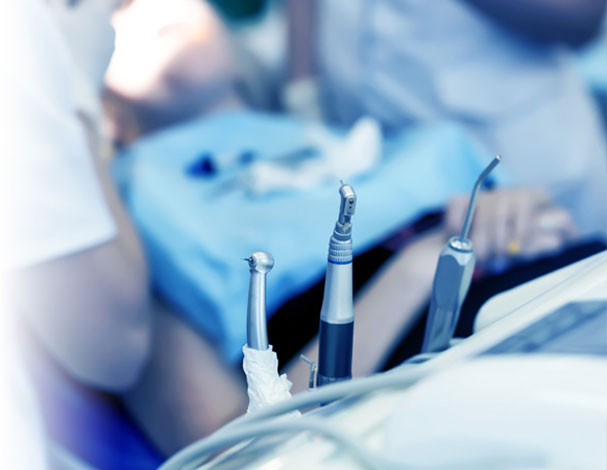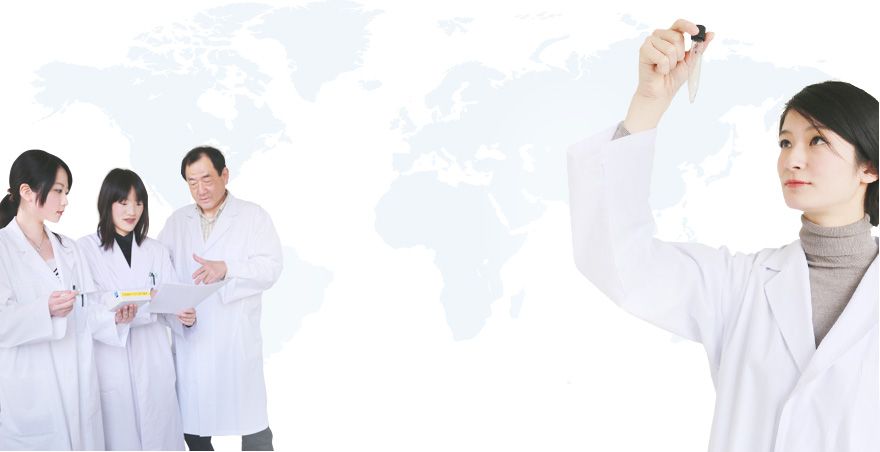1. Core Curriculum
Dental medicine is covered through 6 years of lectures ranging from basic science to clinical studies. Also featured are integrated lectures that provide a deeper understanding.

The core curriculum provides lectures methodically arranged for students to attain a comprehensive understanding of dental medicine. There are also integrated lectures conducted in each year that laterally combine the different areas studied in daily courses. Thus, the curriculum enables students to effectively acquire a deeper understanding of the knowledge and obtain skills within the limited 6-year time frame. Since the lectures are labeled and ordered methodically, students can easily figure out what they are studying (or what they are missing) in the general context. This eventually leads to the encouragement of self-study.
2. Early Exposure
As the first step in becoming a dentist, the mentality necessary as a health care provider is taught through fieldwork.

Upon entering the university, students conduct fieldwork at our university hospital.
Before starting studies on dentistry, students observe treatment of the patients at the university hospital. This is an opportunity for them to enhance their sense of vocation as a future dentist and be prepared for the oncoming curriculum studies.
Though the students yet do not have any background of specialized knowledge, they attempt communication with the patients and their families. It is a way for the freshmen to realize the fear and anxiety held by the patients and think of ways to provide relief.
3. Clinical Practice
In clinical practice, the students see patients assisted by well-trained instructors. The practical skills and professionalism necessary to become a dental practitioner are taught.

The most important aspect in the treatment clinics of ODU Hospital is communication with the patients. Through clinical practice, students learn the importance of sharing the patient's perspective. Instructors are always at hand to provide practical advice in patient interviews, diagnosis, and treatment.
4. National Dentist Examination
The school supports the students in maintaining their concentration and motivation until test day. Information concerning the trends of the examination is analyzed and incorporated into the courses for preparation.

Students aim for the national board examination standards studying in different classes depending on their progress. They are quizzed each morning and full-scale simulation tests are conducted on a regular basis. This helps the students to maintain their concentration during the long haul. There also is support from faculty through special lectures and private consultation sessions.
5. Guidance and Counseling
We create an environment where faculty and students can easily communicate, and provide advice and guidance tailored to each individual.
We appoint an academic guidance professor for each academic stage of students and advising faculty to provide advice and guidance tailored to each student. Students concerned about learning can receive extensive support, through programs created for each student.
6. Common Achievement Test
Jointly offered by dental/medical colleges and universities throughout Japan, the Common Achievement Test assesses whether students have sufficient levels of "comprehensive knowledge," "attitude," and "core clinical competence" before starting clinical training. It can be considered as a quasi-national examination, and students will need to pass all subjects to proceed to clinical training.
Since clinical training begins in the fifth year at our university, students will take the examination in the latter half of the fourth year.
CBT (Computer Based Testing)

Overall level of "knowledge" required for clinical training will be evaluated objectively through multiple choice questions on a computer.
OSCE (Objective Structured Clinical Examination)

Among basic clinical competencies, students' "attitude" and level of "core clinical competence" mastered will be evaluated objectively through simulated clinical practice in an examination room of the University Hospital.
7. Postgraduate clinical training and career options
In order to become a dentist who can provide proper medical care, students must pass the national examination after learning for six years at the School of Dentistry and undergo at least one year of clinical training for dentists as post-graduate training. We have a broad network built over our 100 year history enabling our graduates to choose the type of training they desire. Our hospital not only accepts residents during their clinical training for dentists but also provides lifelong training programs to improve their comprehensive abilities or be certified as a specialist.

Training Programs
Clinical training for dentists: Resident dentists work full-time. Employed under a contract for one year
| Program S (Single) |
Students can acquire the ability to provide comprehensive dental care at the Department of Oral Diagnosis and Interdisciplinary Dentistry of the University Hospital through a one year course. |
|---|---|
| Program C (Complex) |
As the first step in training, treatment of common dental problems and the basics in each specialty are experienced at the university hospital for six months, and another six months at a partner institution. |
Career Options
Over 15,800 graduates of our university contribute to the society in various settings. Many have a private practice, and others work at hospitals, clinics, research institutes, universities, or government offices, and some are engaged in activities at schools, dental associations, health promotions, and other social activities in various fields, as well as many areas, such as Europe, the United States, and Southeast Asia.
8. Student Clinician Research Program (SCRP)
The first step for presenting your research and opening your door to the world
SCRP is an academic conference where students compete with their research results in the form of poster presentations in English. The conferance started in 1959 is now held in 36 countries around the world.
In Japan, the program began in 1995, and since then, representative students from many universities have gathered in August of each year to give enthusiastic presentations. First-place winners in the Japan conference are given an opportunity to present at the plenary session of American Dental Association. Second and third-place winners are awarded prize money.
